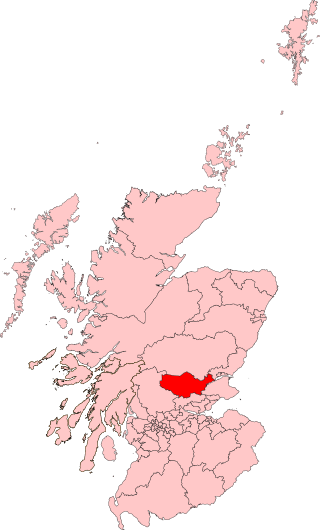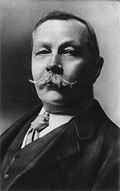Banffshire was a constituency of the House of Commons of Great Britain from 1708 to 1800, and of the House of Commons of the Parliament of the United Kingdom from 1801 to 1983. It elected one Member of Parliament (MP), using the first-past-the-post voting system.
Edinburgh and St Andrews Universities was a university constituency represented in the House of Commons of the Parliament of the United Kingdom from 1868 until 1918. It was merged with the Glasgow and Aberdeen Universities constituency to form the Combined Scottish Universities constituency.
Argyllshire was a county constituency of the House of Commons of the Parliament of Great Britain from 1708 to 1800 and of the House of Commons of the Parliament of the United Kingdom from 1801 until 1983. The constituency was named Argyll from 1950. The constituency was replaced in 1983 with Argyll and Bute.
Sutherland was a Scottish constituency of the House of Commons of the Parliament of Great Britain from 1708 to 1801 and of the Parliament of the United Kingdom from 1801 to 1918.
Ross and Cromarty was a county constituency of the House of Commons of the UK Parliament from 1832 to 1983. It elected one Member of Parliament (MP) using the first-past-the-post voting system.

Dumfriesshire was a county constituency represented in the House of Commons of Great Britain from 1708 to 1801 and in the House of Commons of the Parliament of the United Kingdom from 1801 until 2005. It was known as Dumfries from 1950.
Montrose Burghs was a district of burghs constituency represented in the House of Commons of the Parliament of the United Kingdom from 1832 until 1950.
Forfarshire was a Scottish county constituency represented in the House of Commons of Great Britain from 1708 until 1800, and then in the House of Commons of the United Kingdom until 1950.
South Ayrshire was a county constituency of the House of Commons of the Parliament of the United Kingdom from 1868 until 1983, when it was abolished. It returned one Member of Parliament (MP), elected by the first past the post voting system.

West Renfrewshire was a county constituency of the House of Commons of the Parliament of the United Kingdom from 1885 to 1983 and again from 1997 until 2005. In 2005 the constituency was abolished and the area is now represented by Inverclyde, Paisley and Renfrewshire North and Paisley and Renfrewshire South.
Kilmarnock Burghs was a district of burghs constituency of the House of Commons of the Parliament of the United Kingdom from 1832 to 1918. It elected one Member of Parliament (MP) by the first-past-the-post voting system.
Dunbartonshire was a county constituency of the House of Commons of Great Britain from 1708 to 1801 and of the House of Commons of the Parliament of the United Kingdom from 1801 to 1950.

Perth was a constituency of the House of Commons of the Parliament of the United Kingdom from 1832 to 1918, 1918 to 1950, and 1997 to 2005. From 1832 to 1918 it was a burgh constituency. From 1918 to 1950, and 1997 to 2005, it was a county constituency. During each of the three periods it elected one Member of Parliament (MP).
EastAberdeenshire was a Scottish county constituency of the House of Commons of the Parliament of the United Kingdom from 1868 to 1918 and from 1950 to 1983. It elected one Member of Parliament (MP) by the first past the post system of election.
Elginshire and Nairnshire was a county constituency in Scotland. From 1832 to 1918, it returned one Member of Parliament (MP) to the House of Commons of the Parliament of the United Kingdom, elected by the first-past-the-post voting system.
Peebles and Selkirk was a county constituency of the House of Commons of the Parliament of the United Kingdom (Westminster) from 1868 to 1918. It elected one Member of Parliament (MP) by the first past the post voting system.
Haddingtonshire was a Scottish county constituency represented in the House of Commons of Great Britain and the House of Commons of the United Kingdom from 1708 to 1918.
Wick Burghs, sometimes known as Northern Burghs, was a constituency of the House of Commons of the Parliament of the United Kingdom from 1832 to 1918. It elected one Member of Parliament (MP) by the first past the post voting system.
Kirkcudbright Stewartry, later known as Kirkcudbright or Kirkcudbrightshire, was a Scottish constituency of the House of Commons of the Parliament of Great Britain from 1708 to 1801 and of the Parliament of the United Kingdom from 1801 to 1918. It was represented by one Member of Parliament (MP).
Ayr Burghs was a district of burghs constituency of the House of Commons of the Parliament of Great Britain from 1708 to 1800 and of the House of Commons of the Parliament of the United Kingdom from 1801 to 1950. It elected one Member of Parliament (MP), using the first-past-the-post voting system.








